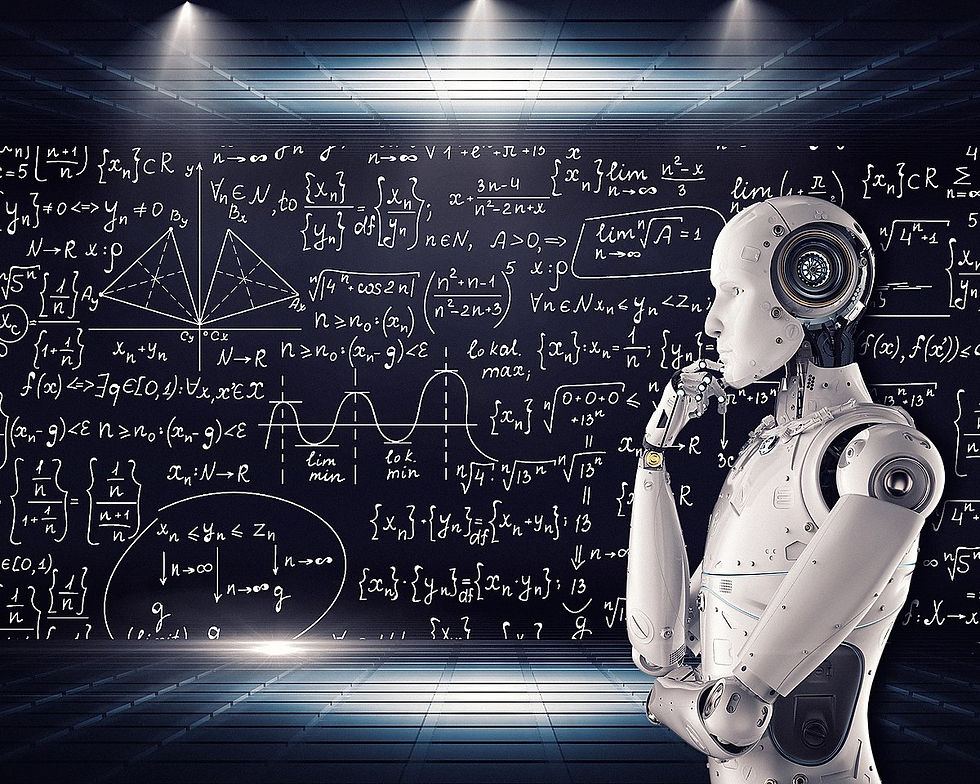Sanskrit: A Bridge to Programming Excellence
- Vyshnavi D
- Oct 13, 2023
- 3 min read
Shrewsbury, MA
In 1985, a NASA associate scientist named Rick Briggs published a study report arguing that natural languages, specifically Sanskrit, are the best choices to convert into a computer program for robotic control and artificial intelligence. He went on to explain why and proved his point quite strongly. This report was only the beginning. Since then, NASA has been continuously researching Sanskrit's potential applications in the programming field. So in this article, let’s talk about what Briggs wrote about and delve into how the fascinating qualities of Sanskrit can contribute to the art and science of programming.
The first thing we’ve all probably heard about Sanskrit is that its syntax is good for programming. This is because Sanskrit's intricate grammar shares similarities with the structured nature of programming languages. Just like how Sanskrit follows strict rules for arranging words to form clear sentences, coding languages have specific syntax rules for writing functional code. Learning Sanskrit's organized grammar can help us understand the importance of following precise instructions in coding, which is essential to make computers understand and execute our commands accurately.

Sanskrit also encourages a logical mindset that aligns with programming. In Sanskrit, words are combined to convey complex meanings, similar to how programming languages use functions and modules to create sophisticated programs. This teaches us how breaking down big problems into smaller, manageable parts can lead to efficient solutions. This way of thinking is vital in programming, where we break tasks into smaller steps to create effective code.
Moreover, Sanskrit's systematic approach fosters attention to detail. In Sanskrit, even a small grammatical error can change the meaning of a sentence. Similarly, in coding, a tiny mistake in syntax can cause errors in a program. Learning Sanskrit can train us to be careful and thorough, which helps us write code with precision and avoid errors that could otherwise be hard to find and fix. In this way, Sanskrit equips us with skills that are directly transferable to the world of programming.
Despite these favorable results, several difficulties need to be taken into account. The first is that all natural languages are ambiguous, which means that any word in a sentence might have multiple interpretations. The challenge is to translate the language so that it becomes less ambiguous and more literal so that robots with artificial intelligence can grasp it.
For example, sarcastic statements are difficult to interpret accurately because understanding sarcasm requires emotional intelligence.
An expression like “That’s just what I needed today!” can be interpreted as either a sarcastic or happy exclamation depending on tonal fluctuations and emotions expressed along with the statement.

Accurate linguistic analysis of statements with emotions and small tonal fluctuations requires the detection of the indicators. This is difficult for AI, particularly if the expression is conveyed via a microphone or read out loud by another person.
Yet, this is another reason why Sanskrit seems more suitable than other languages. The strict grammar rules, syllables, and words have reduced ambiguity making the meaning of words and sentences more literal. The actual meaning of each word and sentence is now clearer because of the rigid grammar standards, syllable counts, and word choice. This significantly lowers the proportion of abstract meanings in the language.
In conclusion, the rich attributes of Sanskrit, including its structured grammar, logical thinking, and meticulous attention to detail make it an excellent foundation for programming. By understanding the parallels between Sanskrit's linguistic precision, learners can bridge the gap between language and programming, equipping themselves with valuable skills that seamlessly transition into the world of coding.
Sources:
"Forget Programming Languages, Machines Need Good-Old Sanskrit to Perform Efficiently." Analytics Insight, www.analyticsinsight.net/forget-programming-languages-machines-need-good-old-sanskrit-to-perform-efficiently.
"Is Sanskrit the Best Language for Artificial Intelligence? See What NASA Says." Business Strategy Hub, bstrategyhub.com/sanskrit-is-the-best-language-for-artificial-intelligence-says-nasa.
“Sanskrit: The First Programming Language ? - Tom Goldenberg - Medium.” Medium, 4 June 2019, medium.com/@tomgoldenberg/sanskrit-the-first-programming-language-d8647753217f.
Want to 'debug' some myths? Be sure to check out STEM-E's latest magazine!
Check Out Our Magazine: STEME Magazine












Comments